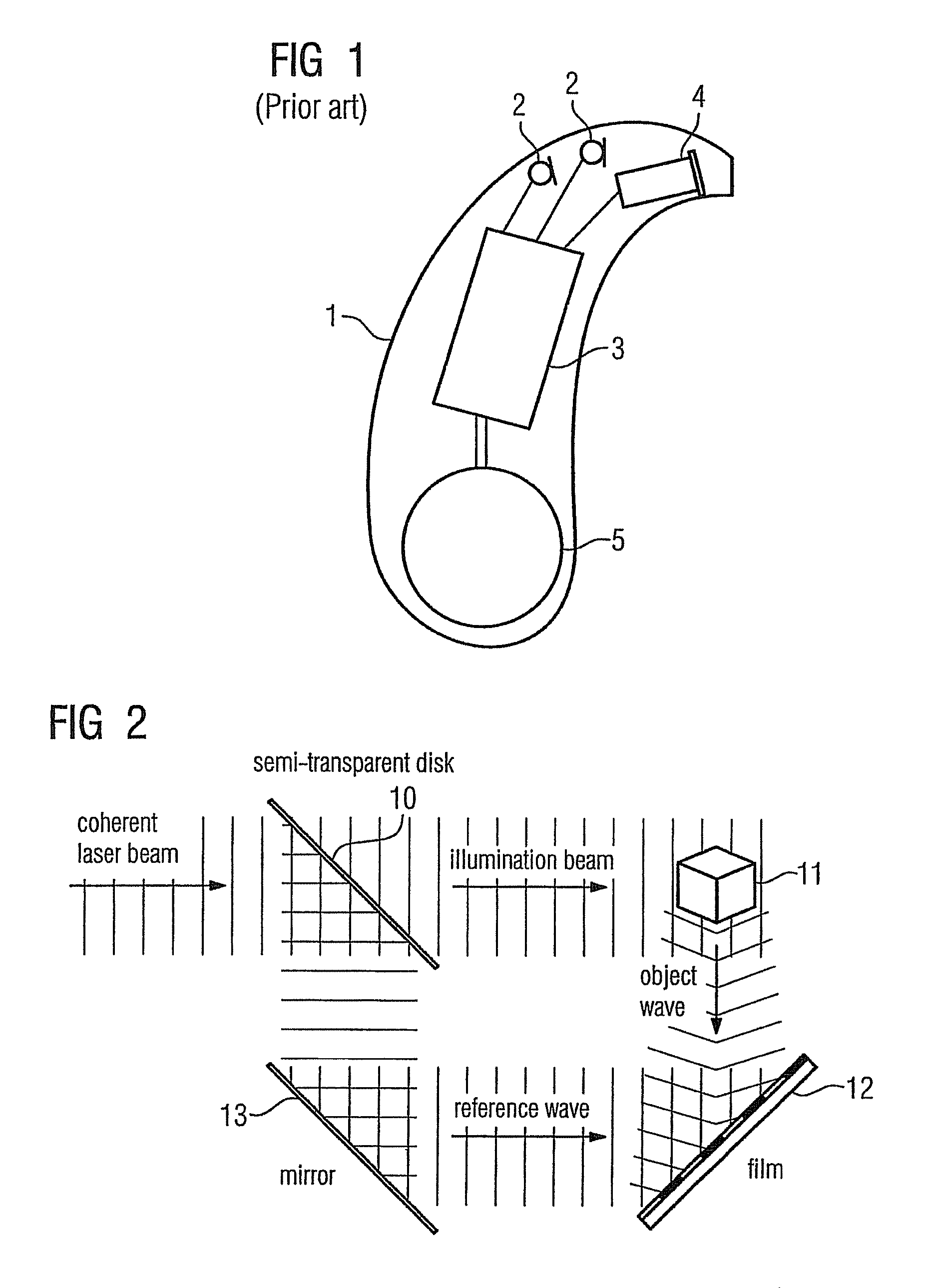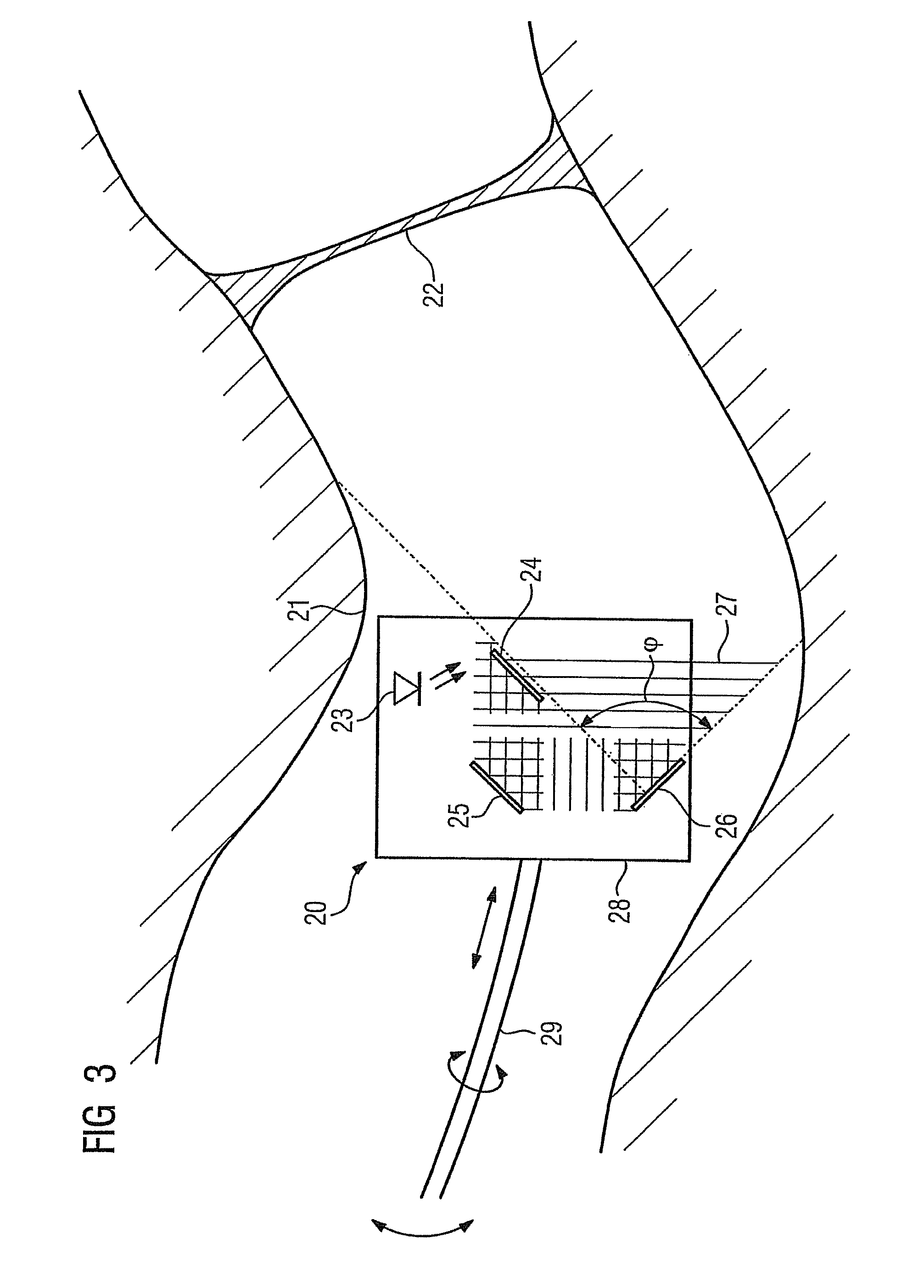Ear canal hologram for hearing apparatuses
a hearing apparatus and hologram technology, applied in the field of recording equipment, can solve the problems of high cost of scanners, requiring a complex system adjustment, and almost exclusively based scanners, and achieve the effect of high-quality hologram
- Summary
- Abstract
- Description
- Claims
- Application Information
AI Technical Summary
Benefits of technology
Problems solved by technology
Method used
Image
Examples
Embodiment Construction
[0026]The exemplary embodiment illustrated in more detail below represents a preferred embodiment of the present invention. The principle behind holography is however first explained in brief on the basis of FIG. 2, in order to gain a better understanding of the structure of the inventive device in accordance with FIG. 3.
[0027]In accordance with FIG. 2, a coherent laser beam is sent to a semi-transparent disk 10 in order to obtain a hologram. One part of the laser beam penetrates the semi-transparent disk and forms an illumination beam, which strikes the object 11, here the ear canal or the ear impression. One part of the illumination beam is reflected onto the object 11 and forms an object wave, which hits a film 12. At the same time, one part of the coherent laser beam is deflected for this purpose by the semi-transparent disk onto a mirror 13 and from there further onto the film 12 as a reference source. The object wave overlaps the reference wave on the film 12, thereby resultin...
PUM
| Property | Measurement | Unit |
|---|---|---|
| semi-transparent | aaaaa | aaaaa |
| semi-transparent | aaaaa | aaaaa |
| spatial structure | aaaaa | aaaaa |
Abstract
Description
Claims
Application Information
 Login to View More
Login to View More - R&D
- Intellectual Property
- Life Sciences
- Materials
- Tech Scout
- Unparalleled Data Quality
- Higher Quality Content
- 60% Fewer Hallucinations
Browse by: Latest US Patents, China's latest patents, Technical Efficacy Thesaurus, Application Domain, Technology Topic, Popular Technical Reports.
© 2025 PatSnap. All rights reserved.Legal|Privacy policy|Modern Slavery Act Transparency Statement|Sitemap|About US| Contact US: help@patsnap.com



